Discover the rich heritage of Non Nuoc Stone Carving Village in Da Nang. This article explores the village's history, skilled artisans, and unique stone crafts.
Learn about traditional techniques, popular souvenirs, and the cultural significance of this centuries-old craft center.
List of Contents
1. Overview of Non Nuoc Stone Carving Village
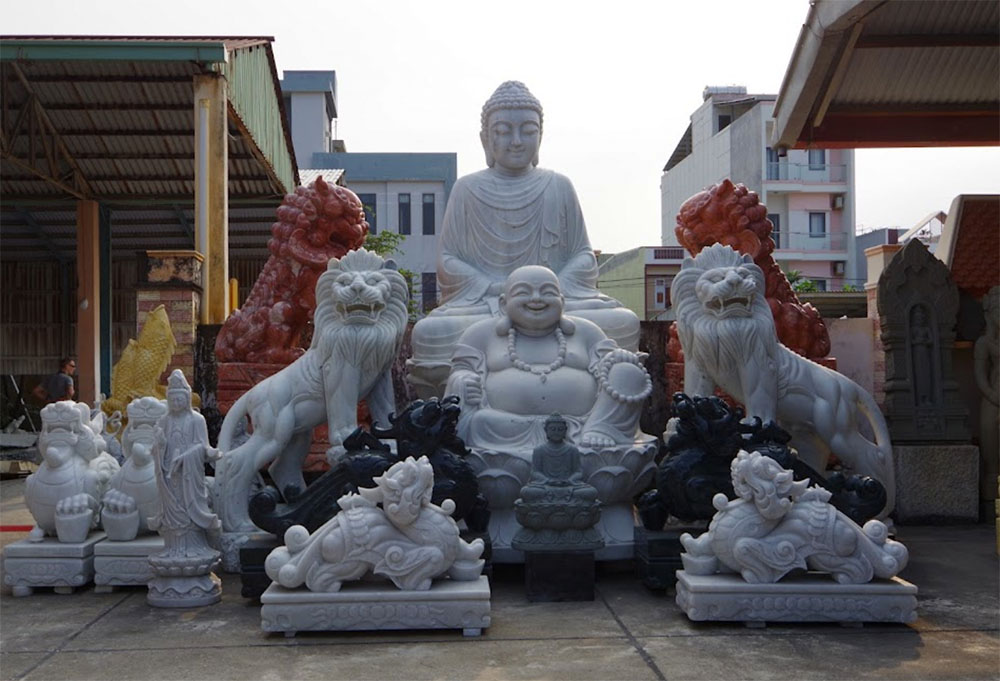
Non Nuoc Stone Carving Village, located at the foot of the majestic Marble Mountains in Ngu Hanh Son District, Da Nang, Vietnam, is a renowned cultural and tourist destination.
This village, rich in history and tradition, is famed for its exquisite stone carvings that attract visitors from all over the world.
2. Historical Background
2.1. Founding and History
Let me tell you about the roots of Non Nuoc Stone Carving Village, mate. This place dates back to the late 18th century when a bloke named Huynh Ba Quat, a true blue artisan from Thanh Hoa Province, moved here with his family and fellow craftsmen.
Over time, this village became the go-to spot for stone carving expertise, really hitting its stride in the 19th century under the Nguyen Dynasty. The villagers‘ skills were so top-notch that they were sought after for building royal mausoleums and palaces, putting Non Nuoc (Also known as Ngu Hanh Son) on the map.
2.2. Evolution of the Craft

Now, in the beginning, the artisans of Non Nuoc Stone Carving Village were all about making practical stuff for daily life, like rice mortars and grain grinders. But as they got better at their craft, they started creating more intricate and artistic pieces.
Nowadays, this village is known for its high-end artistic and export products, like elaborate statues, Buddha figures, and fancy household decorations.
This shift from simple, everyday items to sophisticated artworks has made Non Nuoc Stone Carving Village a real icon of Vietnamese cultural heritage and artistic excellence.
3. The Craft of Stone Carving
3.1. Types of Stones Used
Now, back in the day, Non Nuoc Stone Carving Village used local stones from the Marble Mountains. It was a ripper of a source for high-quality stone, and dead convenient too. But to keep the natural beauty of the mountains intact, they had to stop extracting stone from there.
Nowadays, the village gets its raw materials from all over Vietnam, like Nghe An, Thanh Hoa, Thai Nguyen, Quang Ninh, and Quang Nam. They even import some fancy stones from overseas to keep the artisans happy.
The craftsmen work with all sorts of stones, like granite, marble, onyx, quartz, and other unique types.
3.2. Techniques and Tools
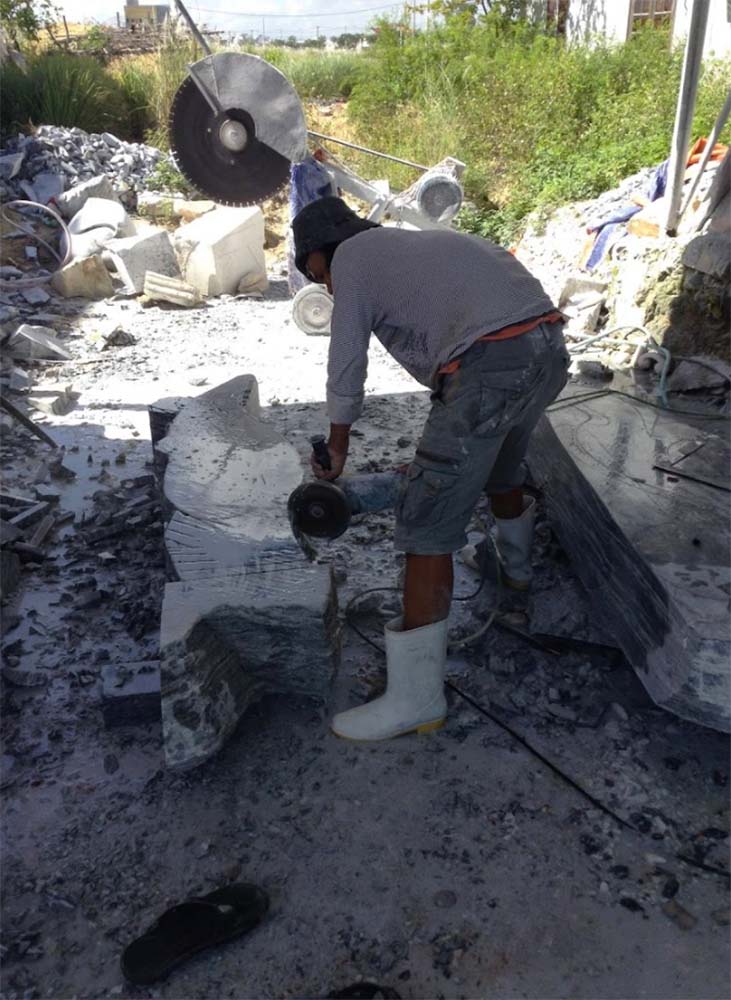
The artisans of Non Nuoc Stone Carving Village are a clever bunch. They use a mix of traditional hand tools and modern machinery to create their masterpieces.
For the intricate and detailed bits, they rely on classic tools like chisels, hammers, and saws, allowing them to shape the stone with precision. But they also use modern polishing equipment and other machinery to speed things up and create finely finished products.
It's this combination of old-school techniques and new technology that keeps the village at the top of its game.
4. Artistic and Cultural Significance
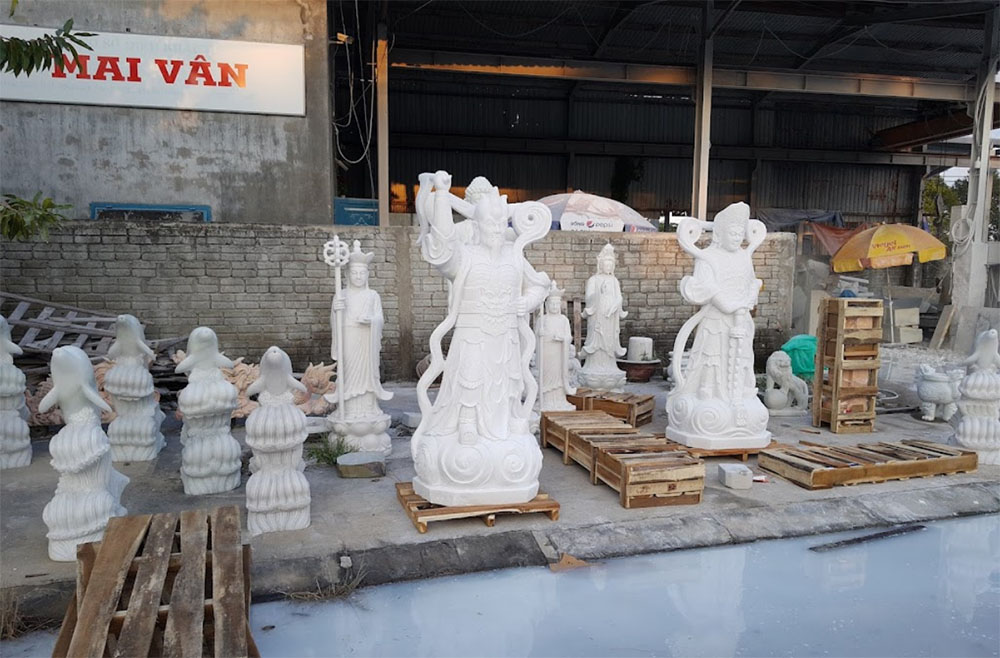
4.1. Role in Vietnamese Culture and Religious Art
Non Nuoc Stone Carving Village is a big deal in Vietnamese culture, especially when it comes to religious and artistic stuff. The village creates all sorts of sculptures, from statues of Buddha and national heroes to famous characters from Vietnamese history and mythology.
These statues aren't just pretty to look at; they're important cultural symbols too. You'll find these carvings decorating temples, pagodas, and historical sites all across Vietnam, adding to the spiritual and aesthetic vibe of these places.
4.2. Influence on Local and International Art
The influence of Non Nuoc Stone Carving Village goes way beyond the local scene. It's made a big splash in the international art world too.
The village‘s artworks have been showcased in various countries, putting the exceptional skill and creativity of its artisans on display. Some notable examples include sculptures displayed in Sydney, Australia; intricate carvings featured in parks in the United States; and unique stone works exhibited in New Zealand.
These international displays just go to show how much the village‘s artistic contributions are appreciated and recognized around the globe.
5. Tourist Experience
5.1. What to Explore in Non Nuoc Stone Carving Village
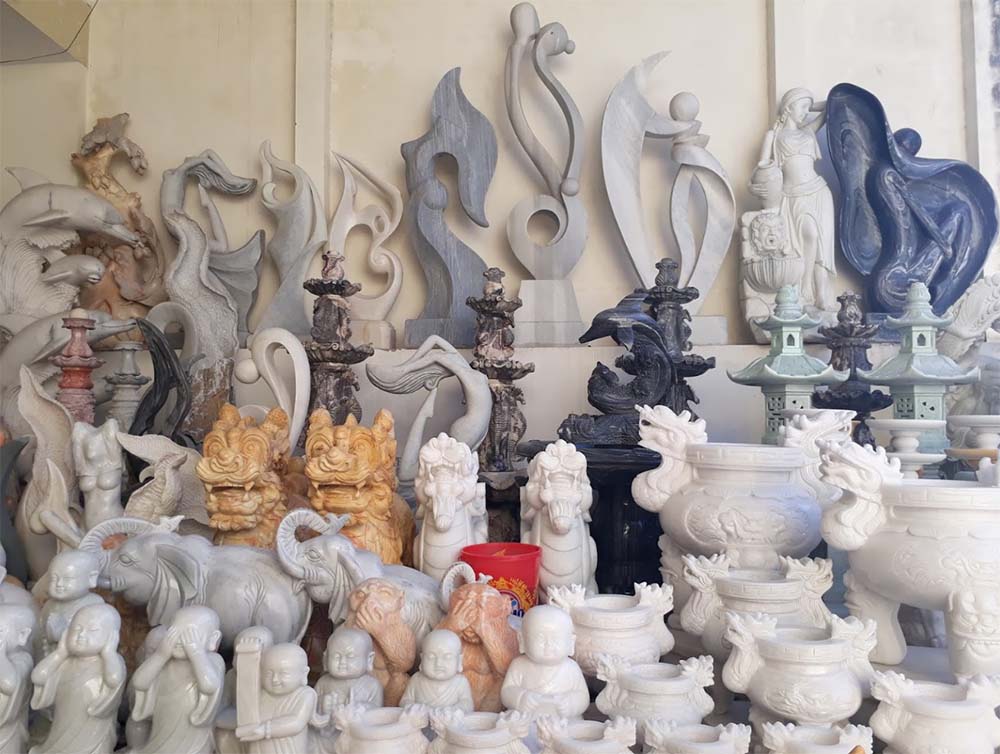
When you visit Non Nuoc Stone Carving Village, mate, you're in for a real treat. It's an experience that'll give you a taste of both the traditional and modern sides of stone carving.
You can check out the various workshops where artisans show off their skills in live carving sessions. It's amazing to see how they transform raw stone into these stunning artworks.
The village has a huge range of products, from household items like vases and ashtrays to jewelry like bracelets and necklaces. You'll also find statues of Buddha and national heroes, and all sorts of souvenirs. There's something for everyone, no matter what you're into.
5.2. Best Time to Visit Non Nuoc Stone Carving Village
If you want to make the most of your trip to Non Nuoc Stone Carving Village, aim to visit during the dry season, which runs from February to August. The weather is perfect for exploring the village and its surroundings, with dry and pleasant conditions.
Plus, there are several local festivals that happen during these months, so you can really immerse yourself in the lively culture and traditions of Da Nang.
5.3. How to Get To Non Nuoc Stone Carving Village

Getting to Non Nuoc Stone Carving Village is a piece of cake, whether you're coming from Da Nang or Hoi An. You've got plenty of options for getting around:
- Bus: It's cheap and easy, especially if you're coming from Hoi An. There's even a direct route, so you can't go wrong.
- Motorbike: If you're in Da Nang, this is a popular choice. It's a scenic ride, and you can go at your own pace.
- Taxi: You can grab a taxi from either city, and you'll get a comfortable, direct ride to the village.
- Private Tours: For a stress-free experience, book a private tour. They'll sort out your transportation and give you a guided visit to the village.
For a smooth trip to Non Nuoc Stone Carving Village, check out our guides on “How to Get Around in Da Nang” and “How to Get Around in Hoi An.” These articles provide top motorbike rental spots in both cities, offering the best deals and travel tips.
By following these guides, you can easily rent a motorbike and make the most of your visit to this cultural gem.
6. Economic and Social Impact
6.1. Contribution to Local Economy

Mate, Non Nuoc Stone Carving Village is a real powerhouse when it comes to the local economy. This village supports over 300 businesses and employs thousands of skilled artisans.
The stone carvings and sculptures crafted here are not only popular in Vietnam but also make a big splash in major export markets like Hong Kong, Japan, Korea, Taiwan, Australia, France, Canada, the Netherlands, and the United States.
The high demand for these handcrafted products worldwide just goes to show the exceptional quality and artistic value of the village‘s stone works.
6.2. Challenges and Preservation Efforts
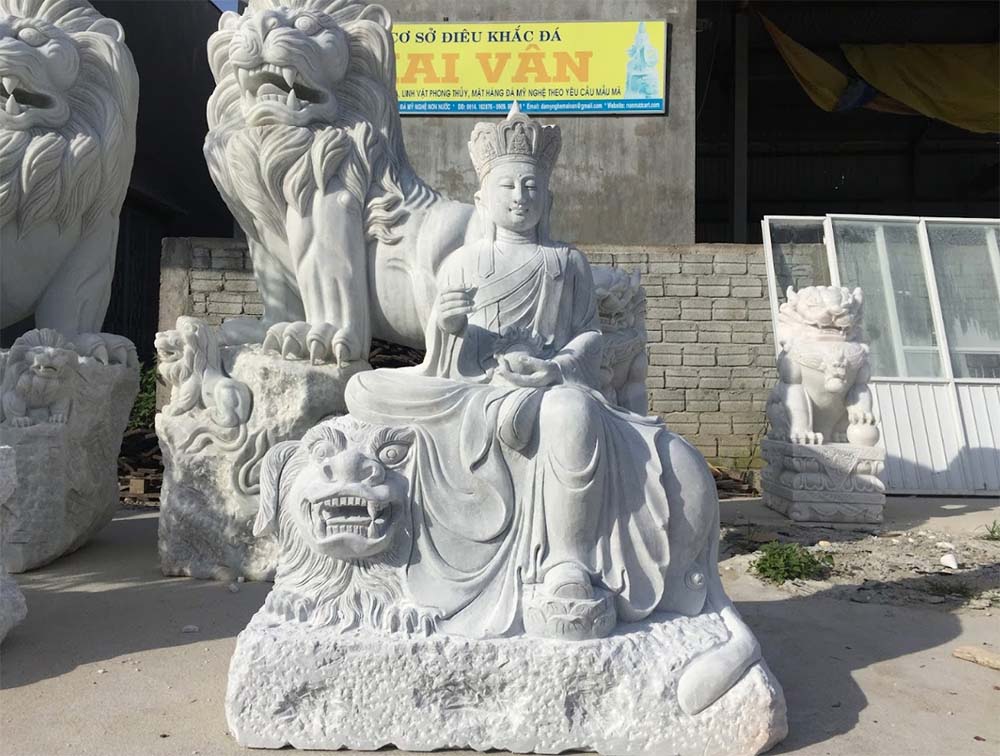
However, Non Nuoc faces some challenges, especially from mass-produced stone items that compete with the traditional handcrafted pieces. To keep the craft alive, the local government and community have stepped up with various initiatives.
They've put in place policies to support local artisans, workshops to pass on skills to the younger generation, and community projects to promote the cultural heritage of the village.
7. Conclusion about Non Nuoc Stone Carving Village
In a nutshell, Non Nuoc Stone Carving Village is a shining example of Vietnamese craftsmanship and cultural heritage that has stood the test of time. With its rich history, wide range of products, and dedicated artisans, it's a must-visit spot for anyone exploring Da Nang.
The village not only gives a big boost to the local economy but also plays a crucial role in keeping traditional Vietnamese art alive. By continuing to protect and preserve this craft, Non Nuoc Stone Carving Village will remain a symbol of cultural pride and artistic excellence for generations to come.






